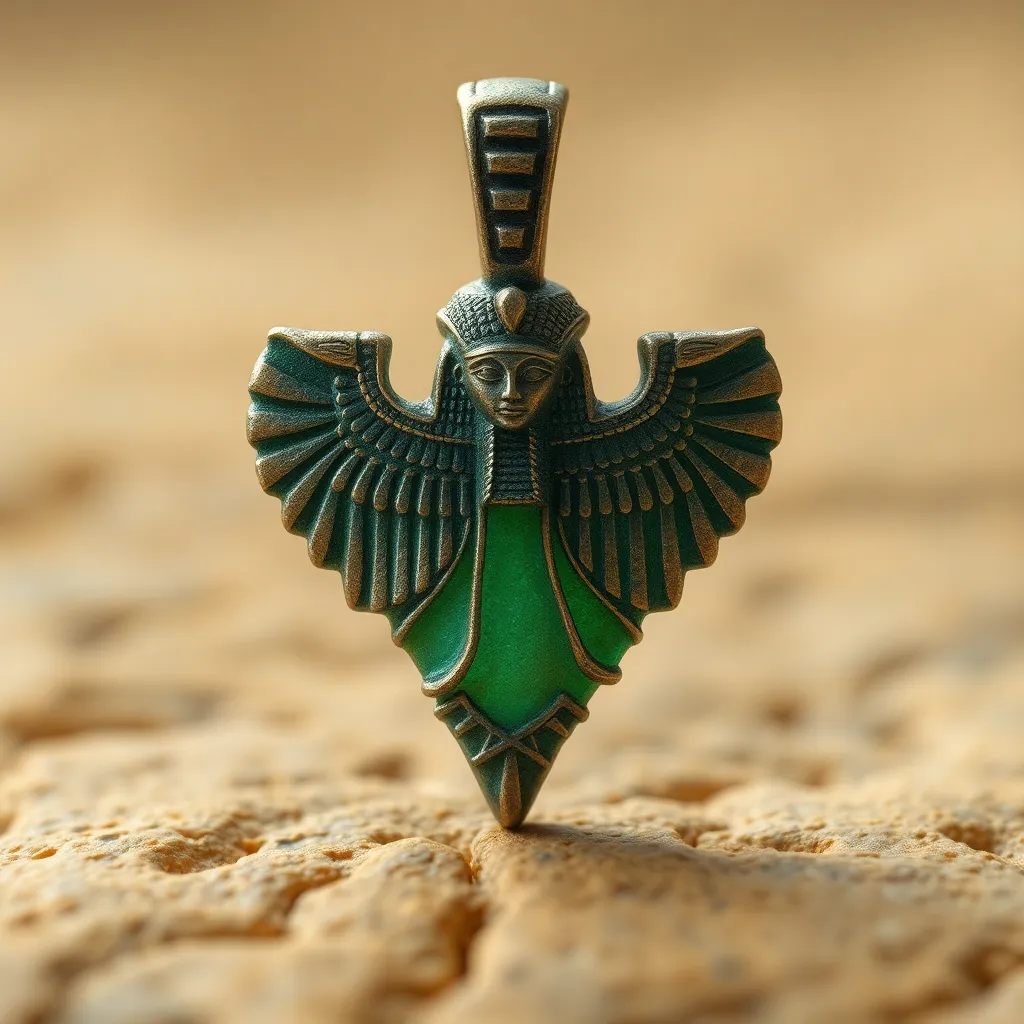The Role of Amulets in Egyptian Mythological Narratives
I. Introduction
In ancient Egypt, amulets were small objects believed to possess protective powers, serving as a bridge between the physical and spiritual realms. These items were integral to both daily life and religious practices, reflecting the ancient Egyptians’ deep-seated beliefs in the afterlife and the supernatural.
Amulets held significant importance in Egyptian culture, symbolizing various deities and concepts that provided protection, luck, and healing. This article aims to explore the multifaceted role of amulets within Egyptian mythology, their historical context, protective qualities, their use in funerary practices, and their enduring legacy in modern times.
II. Historical Context of Amulets in Ancient Egypt
The use of amulets in ancient Egypt traces back to the Pre-dynastic period, evolving significantly through the centuries. Initially, these objects were simple and rudimentary; however, as Egyptian civilization progressed, the craftsmanship and symbolic complexity of amulets grew.
- Pre-dynastic Period: Amulets were primarily made from natural materials like stones and bones.
- Old Kingdom: The introduction of faience (a glazed ceramic material) allowed for more intricate designs.
- Greco-Roman Era: Amulets began to incorporate foreign elements and motifs, reflecting cultural exchanges.
Common materials used in amulet creation included precious metals, stones, and glass, often inscribed with hieroglyphs or symbols. Popular symbols included:
- Eye of Horus – for protection and health
- Ankh – symbolizing life
- Scarab – representing resurrection and transformation
Cultural and religious practices surrounding amulets involved rituals and offerings, with amulets often being blessed by priests to enhance their protective qualities.
III. Amulets as Protective Symbols
Amulets were believed to possess inherent protective power, safeguarding the wearer from harm and misfortune. Egyptians thought that these objects could channel the favor of the gods and spirits, thus providing a tangible connection to the divine.
Specific amulets were associated with deities, each serving distinct protective roles:
- Horus: The Eye of Horus was not only a symbol of protection but also represented healing and restoration.
- Isis: Amulets of Isis were believed to offer protection during childbirth and against illness.
- Thoth: Amulets depicting Thoth were thought to enhance wisdom and communication.
Case studies of popular amulets illustrate their significance:
- Eye of Horus: This amulet was worn for protection and health, often placed on mummies to ensure a safe journey in the afterlife.
- Ankh: Symbolizing eternal life, this amulet was commonly worn by both the living and the dead, embodying the hope for immortality.
IV. Amulets in Funerary Practices
Amulets played a crucial role in funerary practices, ensuring the deceased’s safe passage to the afterlife. They were placed within tombs, accompanying the dead to provide protection against malevolent forces.
The significance of amulets in burial rituals can be summarized as follows:
- Protection against evil spirits during the journey to the afterlife.
- Facilitating the deceased’s resurrection and transformation into the afterlife.
- Ensuring that the individual maintained their identity and connection to the living.
Examples of amulets found in tombs reveal their importance:
- Royal Tombs: Amulets of gold and precious stones were discovered in the tombs of pharaohs, signifying their high status.
- Commoner Tombs: Simpler amulets made from clay or faience were found, indicating widespread belief in their protective qualities.
V. Amulets and Mythological Narratives
Amulets are often woven into the fabric of Egyptian mythological narratives, carrying profound symbolic meanings. They not only served as protective objects but also as narrative devices that conveyed deeper spiritual truths.
Exploring key myths involving amulets reveals their significance:
- Isis and Osiris: The myth of Isis searching for Osiris included elements of resurrection, with amulets symbolizing rebirth and protection against chaos.
- Set and Horus: The conflict between these two deities was often depicted with amulets representing protection against evil.
The narrative function of amulets in storytelling is apparent, as they embody the hopes, fears, and spiritual beliefs of the ancient Egyptians, linking the physical world to the divine.
VI. Amulets in Daily Life
Beyond their protective functions in spiritual and funerary contexts, amulets were commonly worn in daily life for personal protection and luck. They were seen as talismans that could influence everyday activities, from business dealings to health.
The social context of amulet wearing varied across different classes:
- Royalty: Often adorned with elaborate and precious amulets, reflecting their status and divine favor.
- Common citizens: Wore simpler amulets, often made from readily available materials, yet still believed in their protective properties.
Rituals associated with amulet use included:
- Morning blessings to invoke protective powers.
- Offerings made to the gods for enhanced efficacy of the amulets.
VII. Modern Interpretations and Legacy of Egyptian Amulets
The influence of ancient Egyptian amulets extends into contemporary spirituality and practices. Modern interpretations often draw on the symbolic meanings that these objects held in ancient times, adapting them for use in today’s spiritual contexts.
In the field of Egyptology and archaeology, the study of amulets provides insights into the beliefs and practices of ancient Egyptians. Excavations often reveal a wealth of information about their use and significance.
Additionally, the fascination with amulets persists in popular culture, where their imagery and symbolism are frequently referenced in literature, film, and art, reflecting an enduring legacy.
VIII. Conclusion
In summary, amulets played a multifaceted role in Egyptian mythology and life, serving as protective symbols, integral components of funerary practices, and narrative devices in myths. Their significance extends beyond mere objects; they embody the ancient Egyptians’ beliefs in the supernatural, the afterlife, and the protective power of the divine.
The legacy of amulets continues to captivate scholars and enthusiasts alike, offering a window into the complex spiritual world of ancient Egypt. Further exploration and research into these fascinating artifacts promise to enrich our understanding of ancient beliefs and practices.




